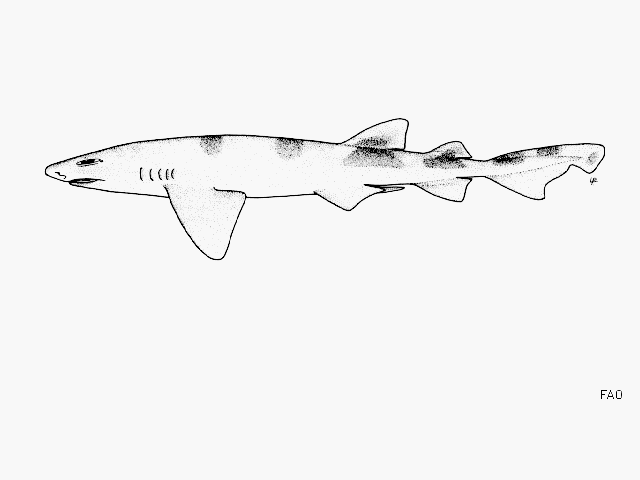| Scyliorhinidae (Cat sharks) |
| 110 cm TL (male/unsexed) |
|
demersal; depth range 40 - 600 m |
| Western Indian Ocean: Mozambique and Natal, South Africa (Ref. 244). Records from the Gulf of Aden are doubtful. Nominal records from Viet Nam were based on an undescribed species often called Cephaloscyllium umbratile which was not even that species. |
|
Dorsal spines (total): 0-0; Dorsal soft rays (total): 0-0; Anal spines: 0-0; Anal soft rays: 0-0. A comparatively large, stout catshark with a broad, rounded snout and no labial furrows; 2nd dorsal much smaller than 1st (Ref. 5578). Pale grey-brown, paler below; juveniles with about 6 slightly darker saddles on the dorsal side which fade and become unmarked in adults (Ref. 5510). |
| Found on the continental shelf and upper slope, preferring areas with sand and mud bottoms (Ref. 5578). Feeds on benthic animals, mainly crustaceans and cephalopods, but also bony fishes, and other elasmobranches (Ref. 244). Oviparous (Ref. 50449). Can expand with air when disturbed (Ref. 244). |
|
(Ref. 96402)
|
| harmless |
|
Source and more info: www.fishbase.org. For personal, classroom, and other internal use only. Not for publication.
Page created by Jen, 05.08.02,
php script by kbanasihan 06/09/2010 ,
last modified by
dsantos, 20/08/10

